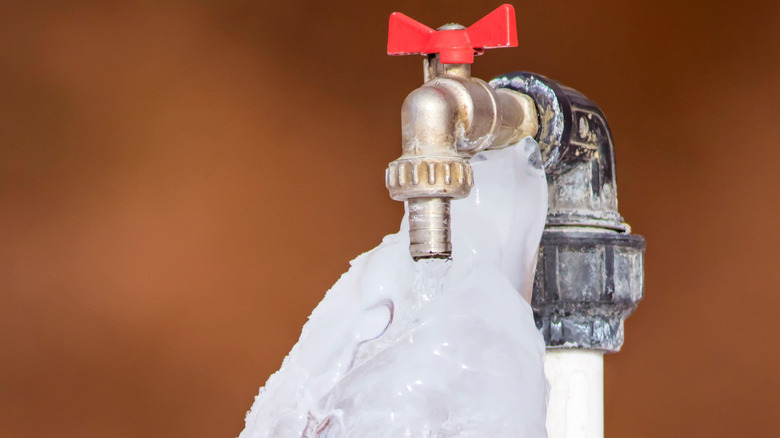The article listed below pertaining to Prevent Frozen Pipes is fairly attention-grabbing. Try it and draw your own personal final thoughts.

Cold weather can wreak havoc on your pipes, especially by freezing pipelines. Right here's how to stop it from occurring and what to do if it does.
Introduction
As temperature levels decrease, the threat of frozen pipes boosts, potentially causing expensive fixings and water damage. Comprehending just how to stop frozen pipelines is vital for home owners in chilly climates.
Prevention Tips
Shielding at risk pipelines
Wrap pipelines in insulation sleeves or use heat tape to protect them from freezing temperatures. Focus on pipes in unheated or external locations of the home.
Home heating strategies
Keep indoor areas sufficiently heated up, especially locations with pipes. Open up cupboard doors to enable warm air to circulate around pipelines under sinks.
How to recognize frozen pipelines
Search for lowered water circulation from taps, unusual odors or sounds from pipes, and noticeable frost on revealed pipes.
Long-Term Solutions
Architectural modifications
Take into consideration rerouting pipes away from exterior walls or unheated locations. Include added insulation to attic rooms, basements, and crawl spaces.
Upgrading insulation
Purchase top notch insulation for pipelines, attic rooms, and wall surfaces. Appropriate insulation helps maintain regular temperature levels and lowers the threat of icy pipelines.
Shielding Outdoor Pipes
Garden pipes and exterior faucets
Disconnect and drain pipes garden pipes before winter. Set up frost-proof faucets or cover exterior faucets with insulated caps.
Comprehending Icy Pipes
What causes pipelines to ice up?
Pipelines freeze when revealed to temperatures below 32 ° F (0 ° C) for expanded durations. As water inside the pipelines freezes, it increases, taxing the pipeline walls and potentially triggering them to rupture.
Dangers and damages
Frozen pipes can cause water system interruptions, residential or commercial property damage, and costly repairs. Burst pipes can flood homes and create extensive structural damage.
Indicators of Frozen Pipes
Determining icy pipes early can avoid them from breaking.
What to Do If Your Pipes Freeze
Immediate actions to take
If you think icy pipelines, maintain taps available to soothe pressure as the ice melts. Use a hairdryer or towels soaked in warm water to thaw pipelines gradually.
Conclusion
Protecting against frozen pipelines calls for aggressive actions and fast responses. By understanding the causes, indicators, and safety nets, home owners can protect their plumbing throughout winter.
5 Ways to Prevent Frozen Pipes
Drain Outdoor Faucets and Disconnect Hoses
First, close the shut-off valve that controls the flow of water in the pipe to your outdoor faucet. Then, head outside to disconnect and drain your hose and open the outdoor faucet to allow the water to completely drain out of the line. Turn off the faucet when done. Finally, head back to the shut-off valve and drain the remaining water inside the pipe into a bucket or container. Additionally, if you have a home irrigation system, you should consider hiring an expert to clear the system of water each year.
Insulate Pipes
One of the best and most cost-effective methods for preventing frozen water pipes is to wrap your pipes with insulation. This is especially important for areas in your home that aren’t exposed to heat, such as an attic. We suggest using foam sleeves, which can typically be found at your local hardware store.
Keep Heat Running at 65
Your pipes are located inside your walls, and the temperature there is much colder than the rest of the house. To prevent your pipes from freezing, The Insurance Information Institute suggests that you keep your home heated to at least 65 degrees, even when traveling. You may want to invest in smart devices that can keep an eye on the temperature in your home while you’re away.
Leave Water Dripping
Moving water — even a small trickle — can prevent ice from forming inside your pipes. When freezing temps are imminent, start a drip of water from all faucets that serve exposed pipes. Leaving a few faucets running will also help relieve pressure inside the pipes and help prevent a rupture if the water inside freezes.
Open Cupboard Doors
Warm your kitchen and bathroom pipes by opening cupboards and vanities. You should also leave your interior doors ajar to help warm air circulate evenly throughout your home.

Hopefully you enjoyed reading our piece about Preventing and dealing with frozen pipes. Thanks a lot for spending some time to read our content. You should take a moment to share this blog posting if you liked it. We treasure your readership.
Call Today